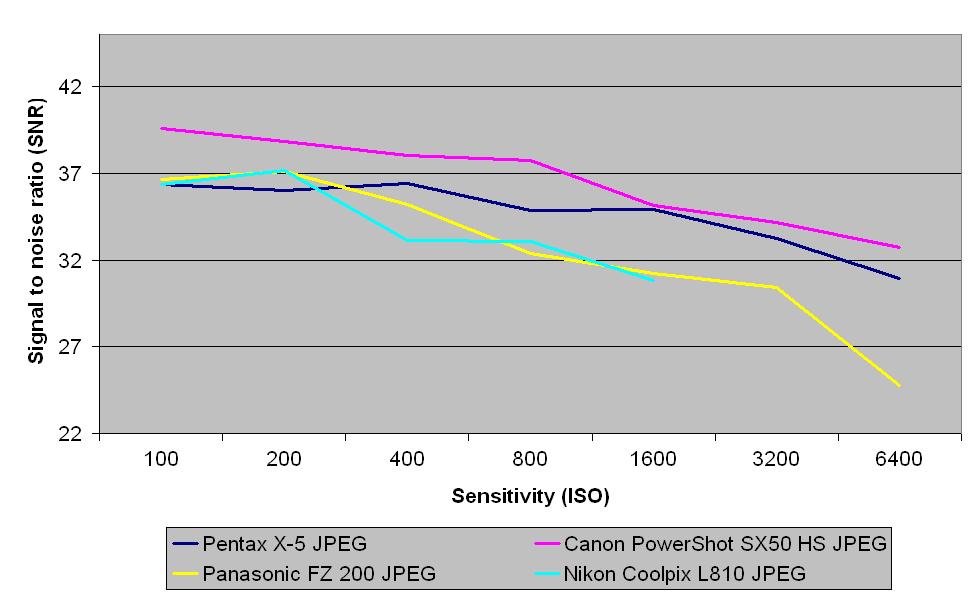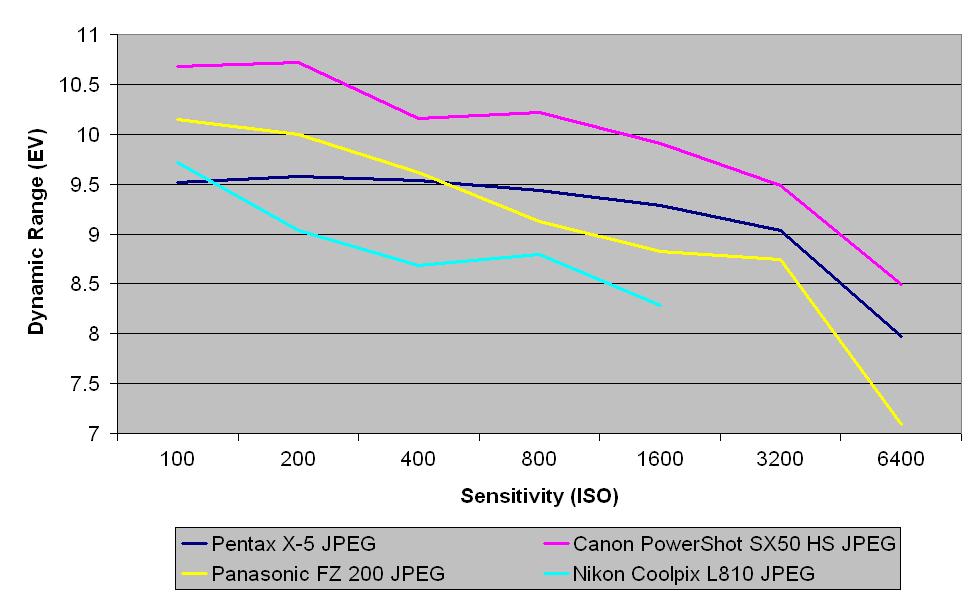Why you can trust TechRadar
We shoot a specially designed chart in carefully controlled conditions and the resulting images are analysed using DXO Analyzer software to generate the data to produce the graphs below.
A high signal to noise ratio (SNR) indicates a cleaner and better quality image.
For more more details on how to interpret our test data, check out our full explanation of our noise and dynamic range tests.
Here we compare the Pentax X-5 with the Panasonic Lumix FZ200, Canon PowerShot SX50 HS and Nikon Coolpix L810.
JPEG signal to noise ratio

These results show that JPEG images from the Pentax X-5 have the weakest signal to noise ratio of all the cameras here at low sensitivity settings. At ISO 400 and above, however, the Pentax climbs up the rankings, coming second to the Canon PowerShot SX50 HS and beating the Panasonic Lumix FZ200 and Nikon Coolpix L810.
JPEG dynamic range

JPEG results for dynamic range are more spread out than those for signal to noise ratio, with the Pentax X-5 again starting off weaker than the other cameras at ISO 100, before moving ahead of the Nikon Coolpix L810 at ISO 200-400. At ISO 800 and above, the Pentax also shows a greater dynamic range than the Panasonic Lumix FZ200, so that at mid and high sensitivities it's only behind the Canon PowerShot SX50 HS.
Current page: Noise and dynamic range
Prev Page Image quality and resolution Next Page Sample images